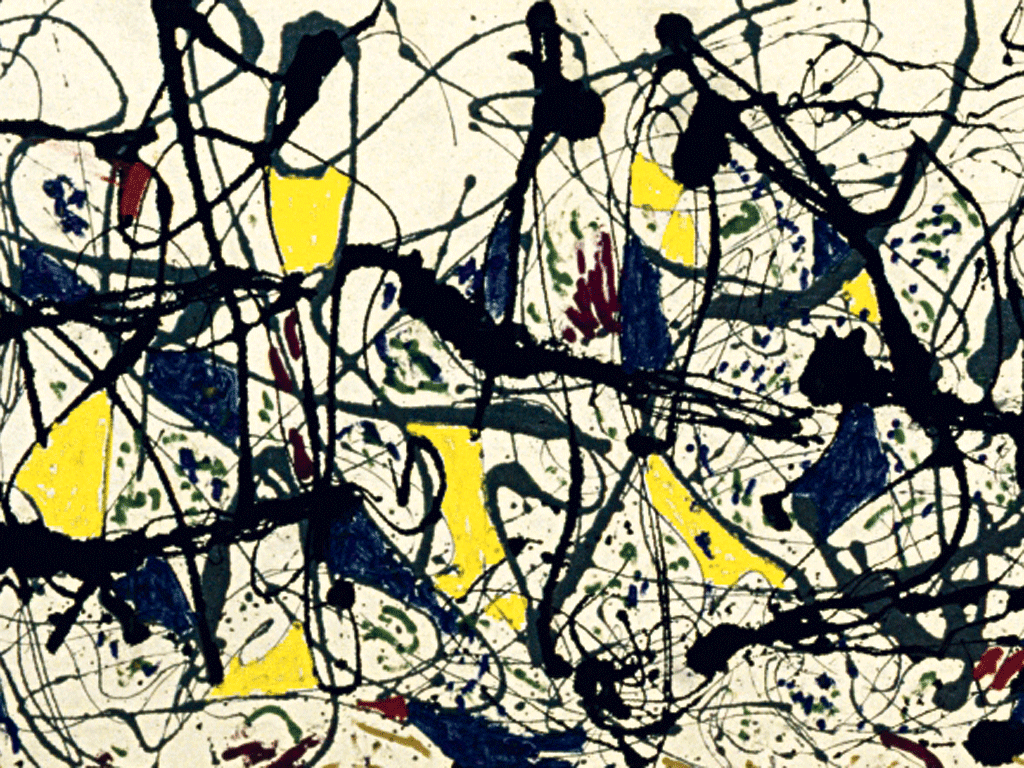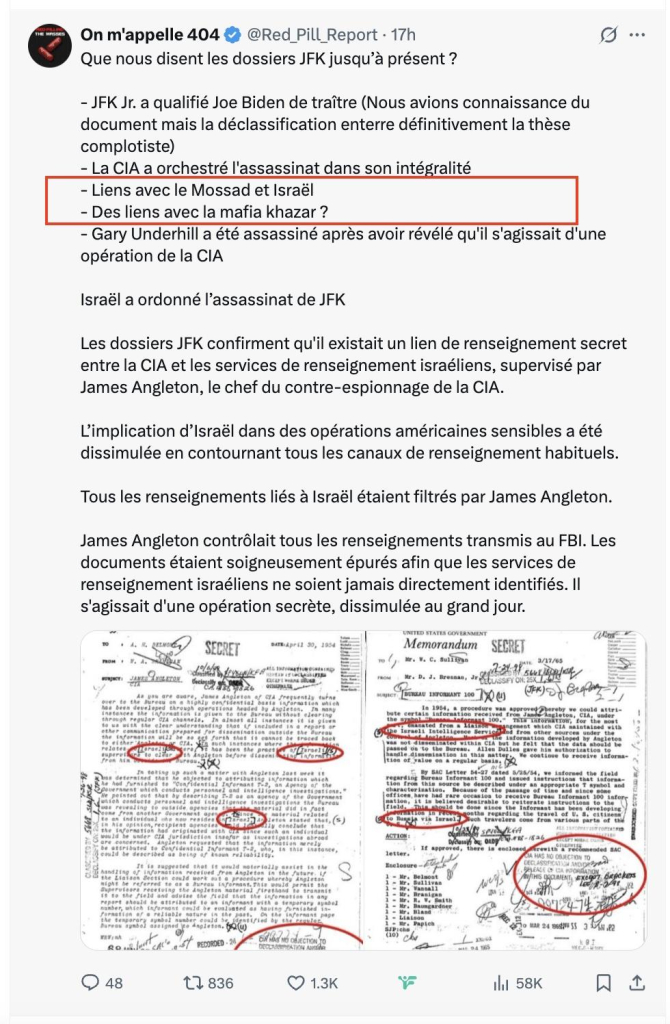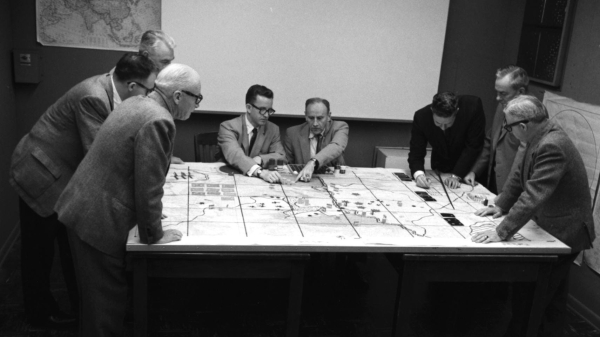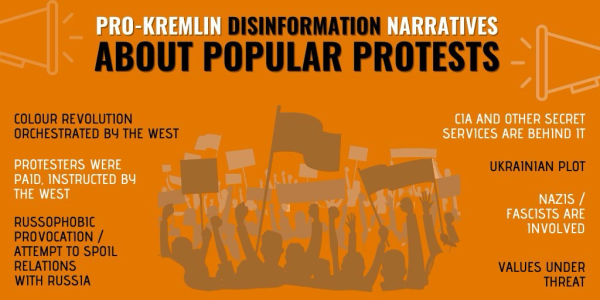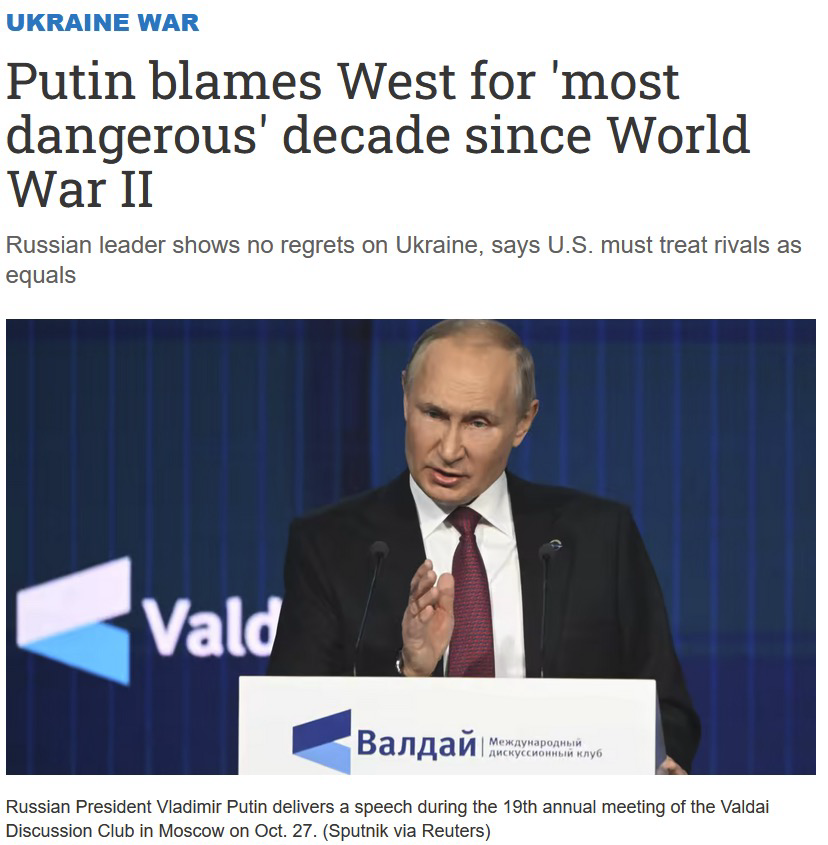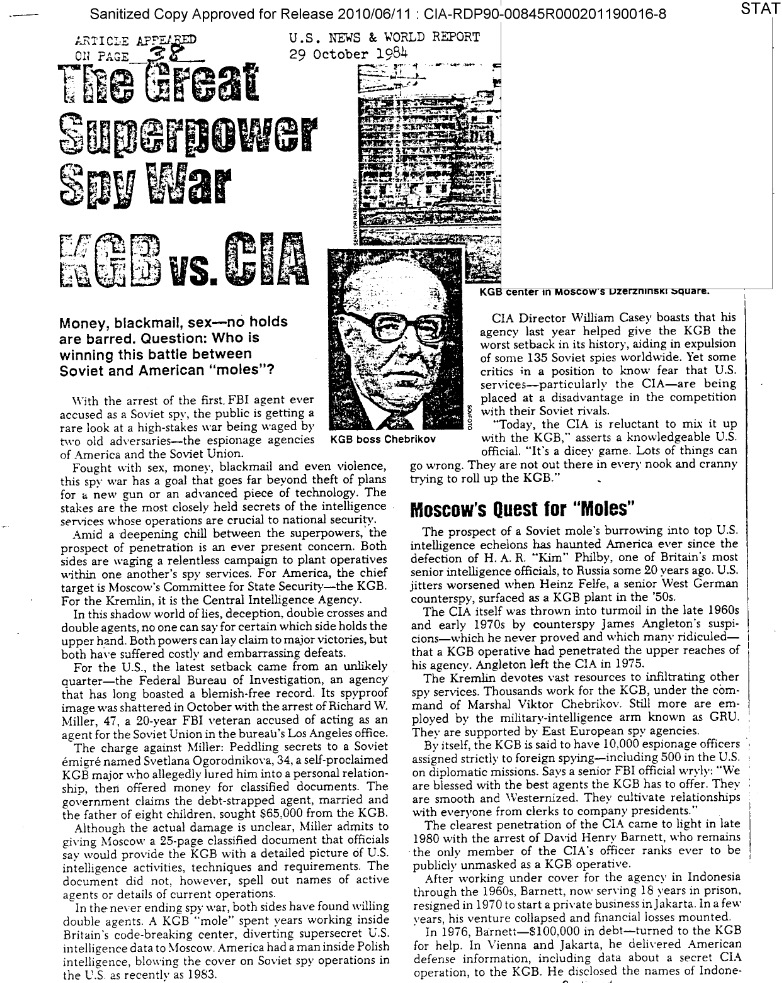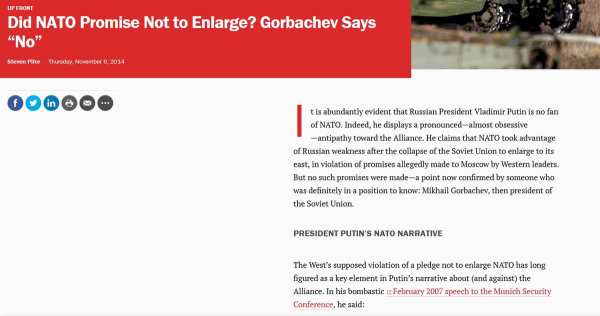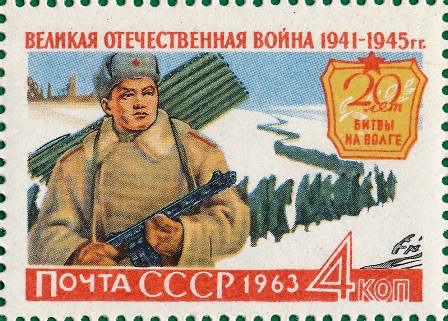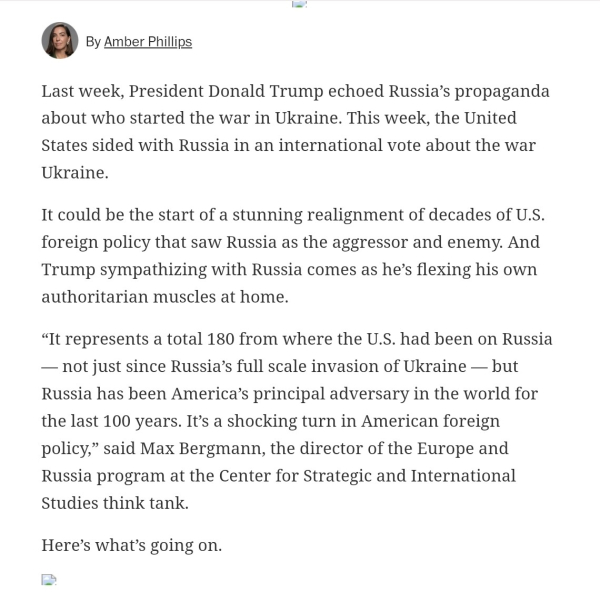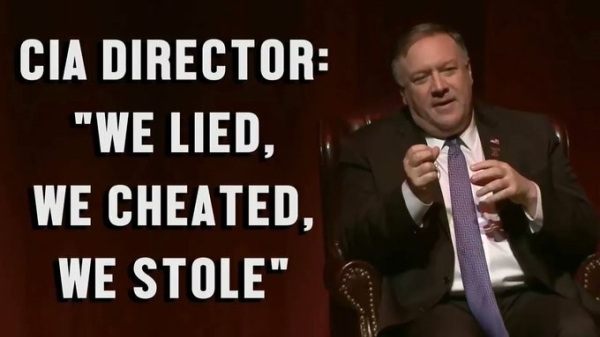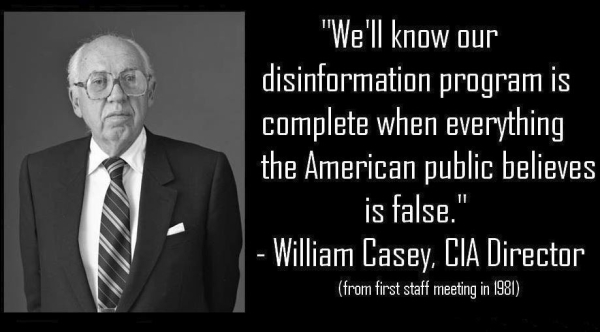Suche
Beiträge, die mit CIA getaggt sind
by Kit Klarenberg in Global Delinquents on Substack
“On March 13th, a bombshell judgment by the European Court of Human Rights found the Ukrainian government guilty of grave #human #rights #breaches over the May 2nd 2014 Odessa massacre, in which dozens of Russian-speaking anti-Maidan activists were forced into the city’s Trade Unions House and burned alive”
https://open.substack.com/pub/kitklarenberg/p/echr-finds-ukraine-responsible-for?r=27oltk&utm_medium=ios
#Press #Ukraine #Odessa #Massacre #Maidan #CIA #Coup
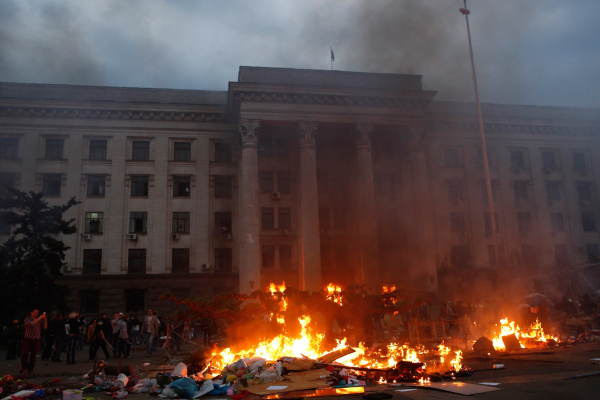
ECHR Finds Ukraine Responsible for Odessa Massacre
All my investigations are free to access, thanks to the generosity of my readers.Kit Klarenberg (Global Delinquents)
#Kennedy
#Israel
#Asesinato
#CIA
https://youtu.be/WI73vLJ0UVQ?si=qUcrXTihpWc2lKiS
Die Signal-Foundation hätte sich keine bessere Werbung kaufen können.
Wenn ihr Messenger als reguläres Kommunikationsmittel der #CIA benutzt wird, dürfte dies so ziemlich der gewünschte Ritterschlag sein.
Anwendungsfehler sind ja nicht das Problem von Signal, sondern der User.
Declassified #JFKFiles reveal that, in 1961, 47% of so-called "political officers" working in US embassies around the world were intel agents #spying on/destabilizing the countries where they were stationed.
In #Chile, 11 of the 13 embassy “political officers” were undercover #CIA.
At the time, the CIA had 3700 operatives undercover overseas, compared to 3900 officials for the State Dept.' -Ben Norton
https://nsarchive.gwu.edu/briefing-book/2025-03-19/cia-covert-ops-kennedy-assassination-records-lift-veil-secrecy
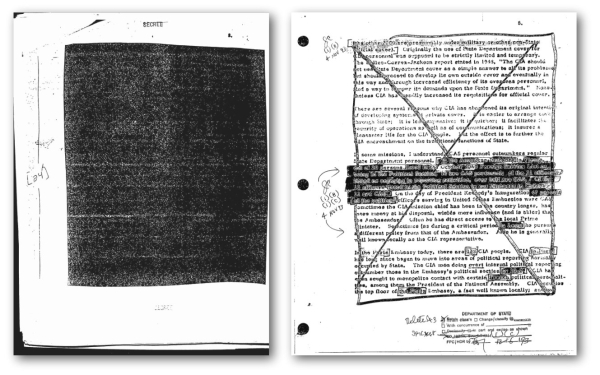
CIA Covert Ops: Kennedy Assassination Records Lift Veil of Secrecy
Washington D.C., March 19, 2025 - On the day of President John F. Kennedy’s inauguration in January 1961, “47 percent of the political officers serving in United States embassies were CAS”—intelligence agents working under diplomatic cover known as C…nsarchive.gwu.edu
“Modern art was CIA 'weapon'”
by Frances Stonor Saunders in The Independent @Independent@flipboard.com
@BBC5Live
@BBCRadio4
@guardian @Independent@press.coop @thetimes
“Revealed: how the spy agency used unwitting artists such as Pollock and de Kooning in a cultural Cold War”
https://www.independent.co.uk/news/world/modern-art-was-cia-weapon-1578808.html
#Press #UK #US #CIA #ModernArt #Pollock #DeKooning #Rothko #Propaganda #ColdWar #SovietUnion #CorporateMedia #ProstituteMedia
@Declassified_UK
@DeclassifiedUK
“The British Military is ACTIVELY involved in Gaza. Here’s how”
https://youtu.be/KaooeJzsRU8?feature=shared
“Matt Kennard can speak with authority on all of this. A journalist and author, his work has ranged from how U.S. military recruitment changed during the ‘war on terror’, to the corporate capture of international aid”
#Press #UK #US #Aid #USAID #Gaza #Genocide #Trump #CIA
by Kit Klarenberg in Global Delinquents on Substack
“As the mainstream media has acknowledged, [Ukrainian ultra-nationalist Stepan Bandera’s] legacy endures in modern Ukraine, in the form of Neo-Nazi military units such as Azov Regiment, & he remains a much-celebrated figure in certain quarters of the country”
https://open.substack.com/pub/kitklarenberg/p/stepan-banderas-sinister-mi6-alliance?r=27oltk&utm_medium=ios
#Press #Ukraine #Britain #Bandera #Fascist #UltraNationalist #NeoNazi #Azov #Batallion #CIA #Genocide #Jews
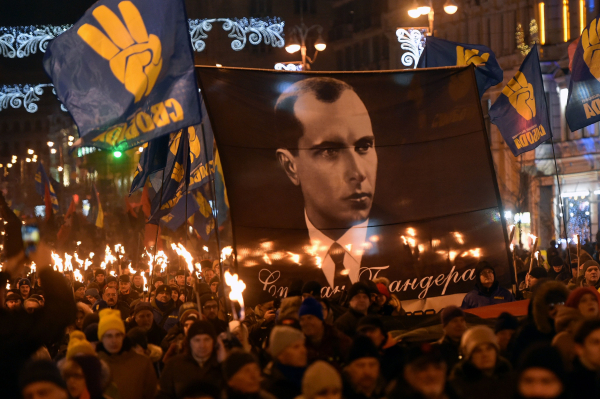
Stepan Bandera's Sinister MI6 Alliance Exposed
March 17th marked the 80th anniversary of the creation of the Ukrainian National Committee.Kit Klarenberg (Global Delinquents)
"Independent media" in the West means a media that is controlled by the West.
European Endowment for Democracy (#EED), which is same shit as #NED (#CIA) but #EU packaging, is also behind of this "independent media" funding.
#USAID
https://tass.com/politics/1932619
https://www.eeas.europa.eu/delegations/ukraine/eu-boosts-support-independent-media-ukraine-additional-%E2%82%AC10-million_en?s=232
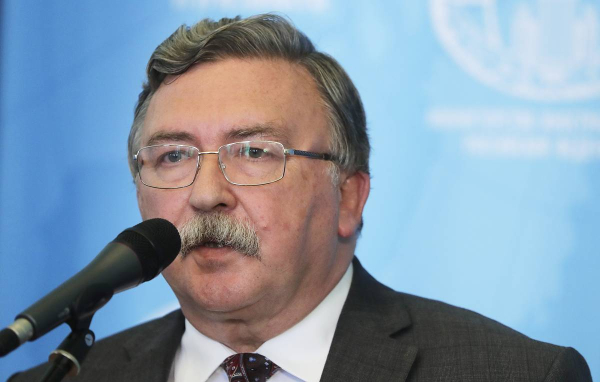
EU does not understand meaning of independence — Russian diplomat
The European Union’s office in Ukraine informed that it would allocate further 10 billion euro to Kiev to finance "independent mediaTASS
Plans to redevelop a Northern #Virginia warehouse site have long been complicated by the area’s worst-kept secret—the presence of a CIA facility. The #GSA put the site up for sale anyway.
https://www.wired.com/story/gsa-sale-cia-facility/
“The GSA’s effort to sell hundreds of US #government properties is part of... Elon Musk’s so-called #Doge...
some of the buildings identified house classified #CIA space"
#Musk #Coup #USPol #News
And we know that CIA, using USAID, was involved in pushing propaganda through Ukrainian media outlets that the outside world mistakenly believed were independent journalists. I am not suggesting I have all, or even some, of the answers about how the CIA and USAID have collaborated over the past 20 years. But there is little doubt that USAID funds — under CIA direction and guidance — were used to spark color revolutions in the Arab world, Ukraine, Georgia and Hungary.https://sonar21.com/usaid-and-the-cia/
#USA #US #american #CIA #intelligence #usaid government #coup #mindmanipulation #georgia #ukraine #ukrainian #media #history
by Rachel Hu and Chris Garaffa
“Though the names of politicians and places have changed, the things Stockwell brings up hit at the heart of issues we are still fighting against and exposing some 35 years later”
https://covertactionmagazine.com/2024/09/04/covertaction-bulletin-cia-whistleblower-john-stockwell-spills-the-beans/
#Press #US #CIA #Covert #Action #Stockwell #Whistleblower #Vietnam #Angola #Torture #Terrorism #Propaganda #Lies
CovertAction Bulletin: CIA Whistleblower John Stockwell Spills the Beans - CovertAction Magazine
John Stockwell is a former CIA officer who became a whistleblower and outspoken critic of the Agency, the U.S. intelligence community and the imperialist policies of the U.S. government.Rachel Hu and Chris Garaffa (CovertAction Magazine)
"Did the #CIA Use Gloria Steinem to Subvert the Feminist Movement? (2017)
https://www.greanvillepost.com/2017/10/01/did-the-cia-use-gloria-steinem-to-subvert-the-feminist-movement/
https://en.m.wikipedia.org/wiki/Rat_(newspaper)
The NED played a pivotal role in helping to trigger the conflict with Russia by supporting two color revolutions directed against Ukraine’s pro-Russian (not really - note mine) leader Viktor #Yanukovych — a potential successor to Vlodymyr #Zelensky if Russia wins.
The 2004 color revolution replaced Yanukovych with Viktor Yushchenko, who favored admitting Ukraine to NATO and adopted an International Monetary Fund (IMF) structural adjustment program that benefitted U.S. investors while cutting social programs.
NED activists employed a broad public relations strategy that included: a) busing paid out-of-town protesters into Kyiv; b) creating an online TV protest station and agitation paraphernalia; and c) providing offshore training to the anti-Yanukovych student leadership. The strategy was based on the writings of Gene Sharp and a template that the NED had successfully employed in Serbia with a youth group called “Otpor,” which helped secure the defeat of socialist Slobodan Milosovic in September 2000 elections.
…
As a sign of the NED’s influence, Ukrainian President Petro #Poroshenko (2014-2020)—a main beneficiary of the #Maidan coup currently awaiting trial on treason charges—bestowed the Order of Princess Olga, one of Ukraine’s highest honors, on Dr. Nadia Diuk,[42] a former vice president and senior adviser to the NED for Europe and Eurasia.
US: overt and covert destabilisation
When a scandal in the 1980s revealed the CIA’s 35 years of international manipulations, President Ronald #Reagan established the National Endowment for Democracy as a more discreet and less controversial instrument. It had the same purpose – to destabilise unfriendly governments by funding the opposition.
#NED #USA #US #american #democracy #CIA #IMF #NATO #deepstate #intelligence #NED #propaganda #fraud #psyops #ukraine #ukrainian #war against #Russia #russian #history
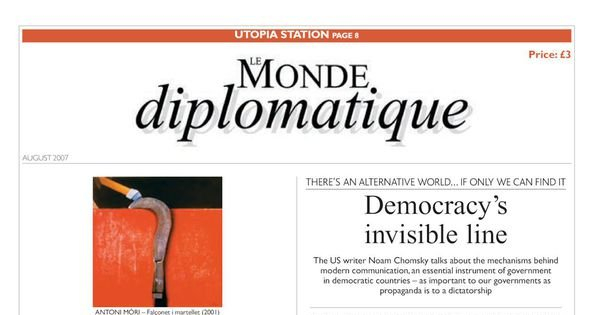
US: overt and covert destabilisation
Subscribers // by Hernando Calvo Ospina (Le Monde diplomatique - English edition, August 2007)Le Monde diplomatique
In the early 80s, our ambassador Alexander #Yakovlev (a classic example of the genre - bed and whiskey) was recruited in Canada. In 1985, he became Mikhail Gorbachev’s chief adviser, and it was through Yakovlev that the last General Secretary was instilled with a plan to reform the USSR economy. In essence, the plan was very simple - to get rid of the superfluous Union republics and then, with the help of the USA, to become a prosperous capitalist state. It was this plan that #Gorbachev proposed to Ronald #Reagan at his very first meeting.
And here is the first remark - historians will probably argue endlessly whether Gorbachev knew or not that this plan was foisted on him by the Americans themselves, or was simply a fool. Personally, I think that he knew and openly and purposefully destroyed the Union. Because this plan included not only the collapse of the country’s rather strong economy under the guise of reforms, but also the bringing to power of outright renegades - #Yeltsin and the group of American advisers who stood behind him, who came to “help” the Soviet Union.
…
Specifically, for the deployment of military operations in Ukraine, a number of contractors were involved, both already well-identified Russophobes and specially established ones at that. Here, we will only list some of them and, accordingly, their main sponsors:
The Atlantic Council- Sponsored by SAAB, Raytheon, and Lockheed. This is the director of the Ukrainian project. Their main lobbyist, by the way, is the same Alperovich who recently authored “The World on the Brink.”
The Center for Analysis of European Policy (established in 2005) - Sponsored specifically by Lockheed, BAE System, Bel Helicopter, and Raytheon, and was designed to promote the agenda in the media.
The German Marshall Fund- Sponsored by the Ministry of Defense of Latvia, Airbus, Boeing, and Raytheon. The main lobbyist is still the same William Kristol, and the former president of Estonia and our old enemy McFaul are also involved.
The Institute for the Study of War (2007) - Sponsored by Raytheon and General Dynamics Dean Corporation. The director of the institute is Kimberly Kagan (wife of Victoria Nuland’s husband’s brother).
These are just a few of the contractors that, by various estimates, handled up to $7 billion in U.S. government and private spending on military corporations to fuel the Ukrainian war. Much of that money ended up in the pockets of the #Nuland family and the #Kagan clan, who are connected to the #Clinton and #Obama families.
#USA #US #american #deepstate #CIA #MIC #warmongers #neocons #russophobia #ukraine #anti-Russia #ukrainian #war #history #soviet #russian #USSR #Russia
Other stakeholders who advised LAC worried the list would embarrass Canada’s Ukrainian community or be used by Russians for propaganda purposes, the records show.
Large numbers of soldiers from a Ukrainian Waffen SS division fled to Canada after the war.
Library and Archives Canada had hoped to release information to the public between Sept. 16 and Sept. 20, but how many names of the alleged Nazi war criminals will actually be made public is not yet known.
The list was part of the 1986 war-crimes commission led by Justice Jules Deschenes. The names were compiled from RCMP files and other documents.
#ukraine #ukrainian #nazi #war-crimes #WWII #WW2 #CIA #history #anticommunism #anti-Russia
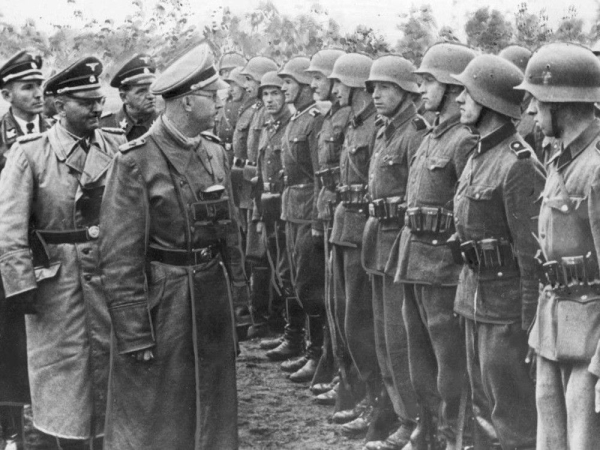
Releasing names of 900 alleged Nazi war criminals who fled to Canada could embarrass federal government, bureaucrats told
Library and Archives Canada consulted a “discrete group of individuals or organizations” about whether the list should be made public.David Pugliese, Ottawa Citizen (Ottawa Citizen)
https://thefreethoughtproject.com/antiwar/69-years-ago-today-the-cia-conspired-with-the-uk-to-overthrow-iran-on-behalf-of-big-oil
#US #american #CIA #UK #britain #coup #iranian #oil for #money #capitalism
#usa #iran #history Coup in Iran (1953): The CIA played a key role ...
#usa #iran #history Coup in Iran (1953): The CIA played a key role in the overthrow of Iranian Prime Minister Mohammad Mossadegh after he nationalized Iran's oil industry. This coup led to the restoration of Shah Mohammad Reza Pahlavi.diaspora* social network
by Kit Klarenberg in Al Mayadeen English
“The #Westminster #Foundation for #Democracy (#WFD), a British #intelligence #cutout, covertly funds and orchestrates political destabilization and regime change efforts worldwide under the guise of democracy promotion”
https://english.almayadeen.net/articles/analysis/britain-s-secret-overseas-meddling-machine
#Press #UK #Britain #Destabilization #RegimeChange #NED #CIA #ForeignOffice #Interference #MI6 #Infiltration #Milosevic #Ukraine #Revolution #Lebanon #Hezbollah
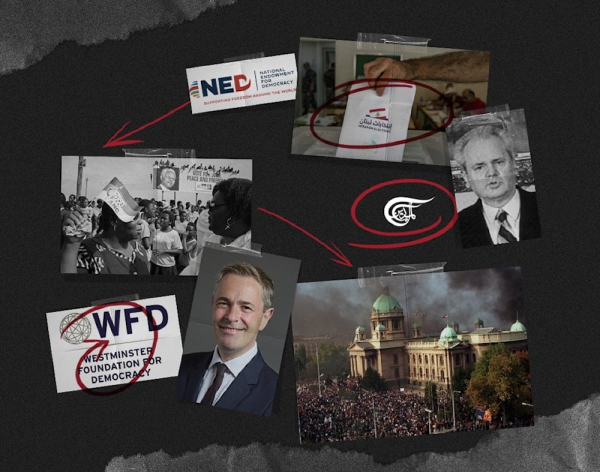
Britain’s Secret Overseas Meddling Machine
The Westminster Foundation for Democracy (WFD), a British intelligence cutout, covertly funds and orchestrates political destabilization and regime change efforts worldwide under the guise of democracy promotion.Kit Klarenberg (Britain’s Secret Overseas Meddling Machine)
I've been recently given that same #GenocideWatch document shown in the video as "evidence". Absolutely insane that someone would believe this garbage. Same site diminishes an actual genocide in #Palestine.
https://www.youtube.com/watch?v=iaRSNbv30SE
- YouTube
Auf YouTube findest du die angesagtesten Videos und Tracks. Außerdem kannst du eigene Inhalte hochladen und mit Freunden oder gleich der ganzen Welt teilen.www.youtube.com
“How #MI6 Infiltrated 'Neutral' Switzerland”
by Kit Klarenberg in Global Delinquents on Substack
“#Switzerland’s Gladio [stay-behind fascist network] unit was known as Projekt-26 [..]. Its existence was uncovered in Nov 1990, as a result of an unrelated Swiss parliamentary investigation triggered months earlier”
https://open.substack.com/pub/kitklarenberg/p/how-mi6-infiltrated-neutral-switzerland?r=27oltk&utm_medium=ios
#Press #Gladio #Projekt26 #Britain #CIA #Fascist #Paramilitaries
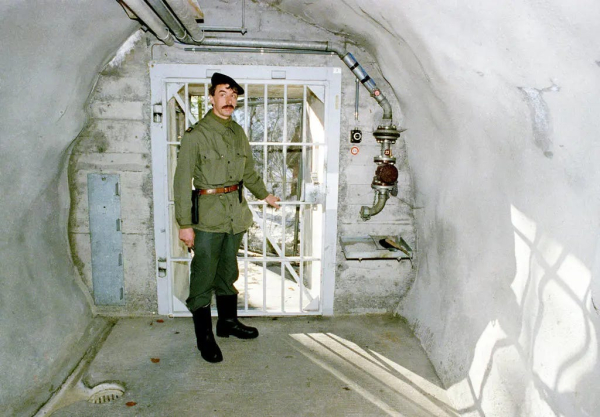
How MI6 Infiltrated 'Neutral' Switzerland
All my investigations are free to access, thanks to the generosity of my readers.Kit Klarenberg (Global Delinquents)
#USAID Exported #CIA #Balkans Terror (paid for #Osama-recruited #KLA #Kosovo mercs... essentially #alQaeda) to #Haiti
https://scheerpost.com/2025/02/26/usaid-exported-cia-balkan-terror-to-haiti/ #Destabilization #DestabilizationOperation #Imperialism #alQaeda #terrorists

USAID Exported CIA Balkan Terror to Haiti
This tragic event produced a neverending descent into nightmarish lawlessness, which endures to this day in the country.scheerpost.com
1) #Russia is the victim,
2) Historical revisionism,
3) The “decadent West” is collapsing,
4) The #CIA and/or “evil Anglo-Saxons” are behind every revolution & anti - #Kremlin activity.
3/25
"... And Trump sympathizing with #Russia comes as he’s flexing his own authoritarian muscles at home."
The 5-Minute Fix from The Washington Post
https://s2.washingtonpost.com/camp-rw/?trackId=596d0c1d9bbc0f208669a59d&s=67bce015eb3eba471a010b79&linknum=5&linktot=47
What it means that the U.S. sided with Russia on Ukraine
It could be the start of a stunning realignment of decades of U.S. foreign policys2.washingtonpost.com
#InternationalLaw #journalism #HumanRights
“Nato propaganda tries to minimize the presence of neo-Nazis in Ukraine by comparing it with that of equivalent groups in the rest of the West. The truth is very different. Bandéristes have gradually taken over the country over the last 30 years, rewriting history, training the youth and changing all the symbols of the state one by one. They have indoctrinated a third of the population and represent a good third of the armed forces. Their goal is to destroy Russia, which they are trying to do with the help of the Straussians.”
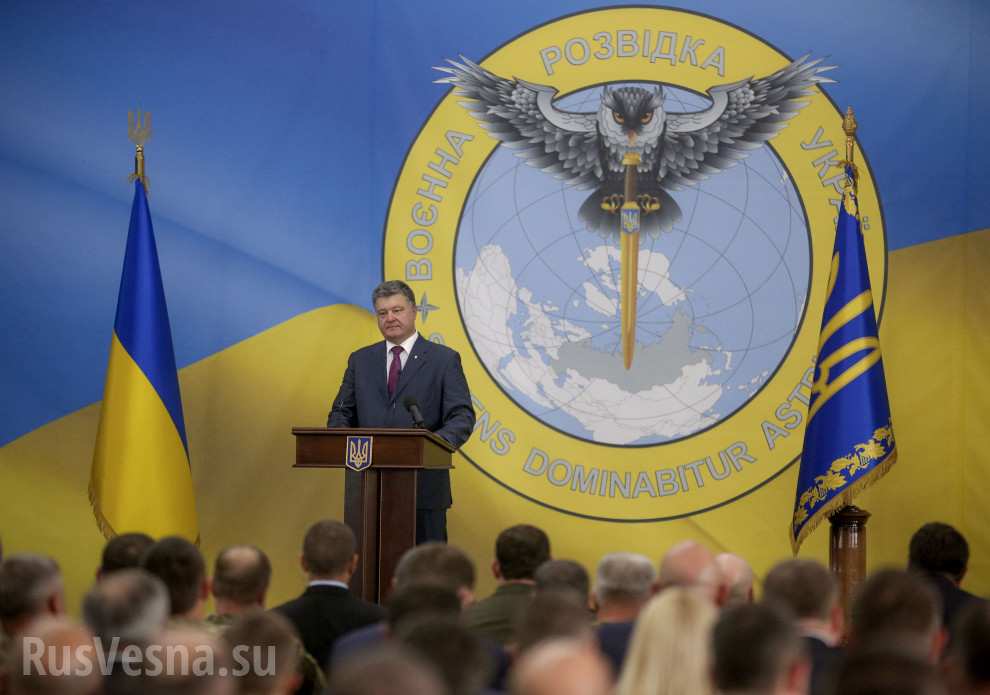
#lang_de
#lang_fr
#lang_ru
#ukraine #NATO #antiRussia #ukrainian #war #Poroshenko #Yarosh #Kolomoysky #Zelensky #Nuland #nazis #neonazis #CIA #USA #US #Donbass #history #lang_en
Украина: Вторая мировая война продолжается
Натовская пропаганда пытается минимизировать значение неонацистов на Украине, сравнивая их с аналогичными группами на Западе. Но правда совсем другая.Тьерри Мейсан (Сеть Вольтер)
Acc/to his military biography, Gen Caine was a part-time member of the Air National Guard from 2009 to 2016 & “a serial entrepreneur & investor.”
He was also an assoc director for #military affairs at the #CIA from 2021 to 2024, serving as the principal liaison to the #Pentagon & working w/the military on several highly classified programs & operations….
#law #USpol #NationalSecurity
By Yana Kunichoff
Published December 11, 2009
"New details of Blackwater participation in clandestine CIA raids detail the extent to which private security contractors were involved in covert government antiterror operations.
"According to former employees and current and former American intelligence officials, who agreed to speak on condition of anonymity because they feared repercussions, Blackwater security guards participated in clandestine raids to capture or kill suspected insurgents in #Iraq and #Afghanistan and in transportation of detainees on CIA flights.
"The raids against suspects were said to occur almost nightly between 2004 and 2006, the height of the Iraqi insurgency. Several of the former Blackwater employees said the lines dividing the government-sanctioned agencies (the CIA and the military) and Blackwater began to blur.
"This information highlights a more extensive relationship between the CIA and Blackwater, now re-named Xe Services, than government investigation had previously acknowledged.
"This was confirmed recently by an article about #ErikPrince, the founder of Blackwater, published in Vanity Fair. In it, Prince spoke about the extent of his involvement with the CIA, which ranged from putting together, funding and executing operations to bring personnel into 'denied areas' to targeting specific people for #assassination who were deemed enemies by the #USGovernment.
"Though Prince alleged that he participated as a private citizen and used his personal funds to carry out operations, the Blackwater employees interviewed by The New York Times confirmed both their full knowledge of and participation in the raids.
"#Xe spokesman Mark Corallo, however, continued to deny this."
Full article:
https://truthout.org/articles/extent-of-blackwater-and-cia-collaboration-uncovered/
#TigerSwan #BigOil #HumanRights #Covert #Corporatism #Corporatocracy #Corruption #Capitalism #Colonialism
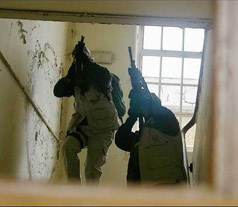
Extent of Blackwater and CIA Collaboration Uncovered
New details of Blackwater participation in clandestine CIA raids detail the extent to which private security contractors were involved in covert government…Yana Kunichoff (Truthout)
Agent Zelensky
#anti-Russia #russophobia #failstate #ukraine #history #vassalage #oligarchy #ukrainian #president #Zelensky is #showman with #lie and #corruption #Maidan #britain #USA #nato #CIA #MI-6 #sbu support #terrorism #mindmanipulation #psyop #politics #fraud #nazism #Kolomoysky #Kolomoisky
- YouTube
Auf YouTube findest du die angesagtesten Videos und Tracks. Außerdem kannst du eigene Inhalte hochladen und mit Freunden oder gleich der ganzen Welt teilen.youtube.com
BBC even had a special about it. Neutered of specific details, like what exactly their participation in the assassination of an Italian Prime Minister (Aldo Moro) was, but WE ALL KNOW they were #NAZIS
"This 3-part series exposes the clandestine 'stay-behind' operation sponsored by the #CIA and #NATO to counter communist influence after World War II in Italy, as well as in other European countries." https://www.youtube.com/watch?v=lTmFgGOlqTM
- YouTube
Auf YouTube findest du die angesagtesten Videos und Tracks. Außerdem kannst du eigene Inhalte hochladen und mit Freunden oder gleich der ganzen Welt teilen.www.youtube.com
“Britain: Operation Gladio’s Secret ‘Headquarters’”
by Kit Klarenberg in Al Mayadeen English
“Operation Gladio was a covert NATO program using clandestine units for false flag attacks and political destabilization, with Britain and the CIA playing a central role”
https://english.almayadeen.net/articles/analysis/britain--operation-gladio-s-secret--headquarters
#Press #UK #US #Gladio #CIA #NATO #Mafia #Fascists #Covert #FalseFlag #Attack #Assassination #Bombing #AntiLeft #Britain #HQ #MI6 #Alchemy #ProjectAlchemy #Ukraine #StayBehind
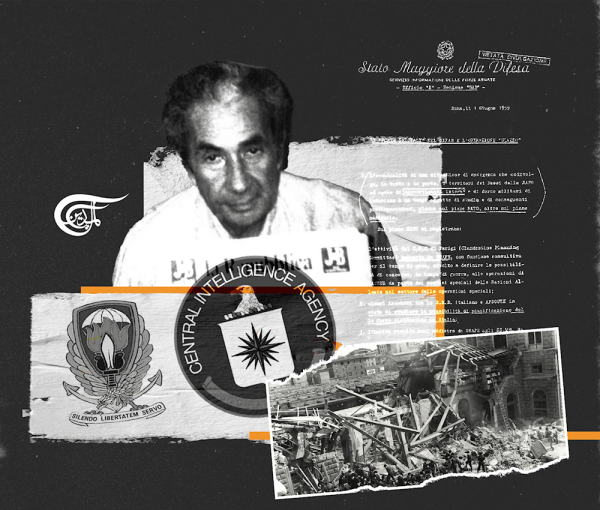
Britain: Operation Gladio’s Secret ‘Headquarters’
Operation Gladio was a covert NATO program using clandestine units for false flag attacks and political destabilization, with Britain and the CIA playing a central role.Kit Klarenberg (Britain: Operation Gladio’s Secret ‘Headquarters’)
"
This Week in Democracy – Week 3: Shadow President Elon Musk in Full Control
Zeteo's new project to document the ongoing, week-by-week growth of authoritarianism in the Trump second term.
"
https://zeteo.com/p/this-week-in-democracy-week-3-musk-trump-usaid-fbi-doe
8.2.2025
#ACLU #authoritarianism #CIA #ConstitutionalEmergency #DEI #Democracy #DOGE #DOJ #EPA #FBI #FCC #Menschenfeindlichkeit #Musk #NARA #NCMEC #NOAA #Staatskrise #TheKennedyCenter #UNRWA #USA #USAID

